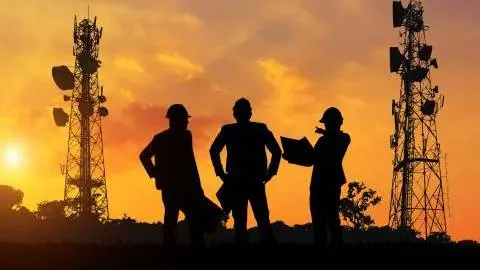In with the old: navigating the road to circular IT
Reducing the environmental impact of IT hardware production plays a crucial role in the path towards developing a circular economy. But what are the next steps? From the initial stages of product design to repairs and repurposing, renewed IT practices could provide a window of opportunity for telecoms operators
As part of the EU's plan to develop a circular economy, the European Green Deal has been created to mitigate a few major environmental challenges. Included in the EU's policy aim is a lower environmental impact from telecom equipment manufacturing. This objective is compounded by increasing awareness of the scarcity of the raw materials that are used to make semiconductors and other electronic equipment. The EU aims to:
- Increase the use of recycled materials in products
- Improve the ability to repair products
- Lower the environmental footprint of produced equipment and products
- Extend the life cycle of products through the restriction of single-use products
To do so, the European Commission (EC) has established a Circular Economy Action Plan for a cleaner and more competitive Europe.
Recycling
The collected waste from IT and telecom equipment averaged around 1.3kg per household in 2018 for countries such as Germany, France, Belgium and the Netherlands, according to Eurostat data. Around 39% of e-waste in the EU27 was recycled in 2018, while the share of material recycled and fed back into the economy (compared to overall material use) was only 11.7% in 2021. If Europe wants to reach strategic autonomy and develop a greener economy, these percentages must be lifted.
Produce more with same materials through recycling
Design and repair improvements
According to the EU, energy consumption over the lifecycle of the 2020 installed base of mobile phones, cordless phones and slate tablets was calculated at 39.5TWh. The EC aims to reduce the primary energy consumption of these devices by 33% and – together with the EU Council – is working on a 'right to repair' directive for smaller electronic devices such as phones and laptops.
While its main practical feature is the right for citizens to repair small electronic products, the draft directive also discusses a more fundamental requirement: improved design of products. According to the EU action plan for a circular economy, a large part of the environmental impact of products is determined in the initial design phase. The draft of the directive sets requirements with respect to the 'design for repair and reuse', including the availability of spare parts, access to repair and maintenance information, disassembly design and a function to reset products for reuse. Additional criteria have also been outlined for improved reliability and operating system updates, as well as recycling.
Interestingly, many new products have been created through environmentally conscious endeavours and are built from replaceable modules, which facilitate easy repairs and hardware upgrades. Fairphone, for example, produces a device based on parts that can be replaced easily and puts additional effort into sustainability requirements, including the use of materials. Framework, on the other hand, offers an option for buyers to create their own laptops from separate modules with the promise that parts can easily be replaced to upgrade or extend the life of their products. A higher number of mobile phone repair shops can also now be found in shopping centres, especially when compared with those for telephone companies. Consumer awareness is increasing, with websites like iFixit now providing extensive tutorials and tools to replace product parts. Apple also offers the option to repair products at home for consumers in the US. Nevertheless, EU institutions have not yet provided a clear roadmap signalling any new legislation.
Extend life with good product design including repair options
Updated regulation for charging cables and batteries
To reduce the waste from the myriad of cables and chargers that most households currently own, the EU requires a common USB Type-C charging cable from 2024. This should allow consumers able to charge small electronic devices (such as phones, digital cameras, tablets, headphones and e-readers) through this cable. New battery regulations are also being prepared to replace the EU's current outdated legislation.
At the moment, 50% of the total battery weight is required to be recycled, which is set to increase to 70% by 2030 for lithium-ion batteries. The proposed legislation also sets additional reporting and collection requirements for manufacturers. This will likely help to make better use of raw materials and lower the environmental footprint of electronic devices.
Sustainable products: a new opportunity for telecom operators?
While we expect the demand for more sustainable IT products to remain something of a niche market in 2023, we do think there are opportunities for telecom operators to retain customers through sophisticated repair programs. In 2017, a study named “Smartphones are replaced more frequently than t-shirts” showed that an average lifespan of 5.2 years would be considered ideal for consumers, while the current average remains much lower at around 2.7 years. If telecom providers could help customers to extend the life of their smartphone at a reasonable price, some would likely be happy to stay with the provider beyond the contract tenor. In turn, telecom operators will lower customer churn, which is a key performance indicator in the telecom sector.
This publication has been prepared by ING solely for information purposes irrespective of a particular user's means, financial situation or investment objectives. The information does not constitute investment recommendation, and nor is it investment, legal or tax advice or an offer or solicitation to purchase or sell any financial instrument. Read more
Download
Download article
7 February 2023
Telecoms Outlook 2023: Navigating challenges at the speed of light This bundle contains 8 Articles